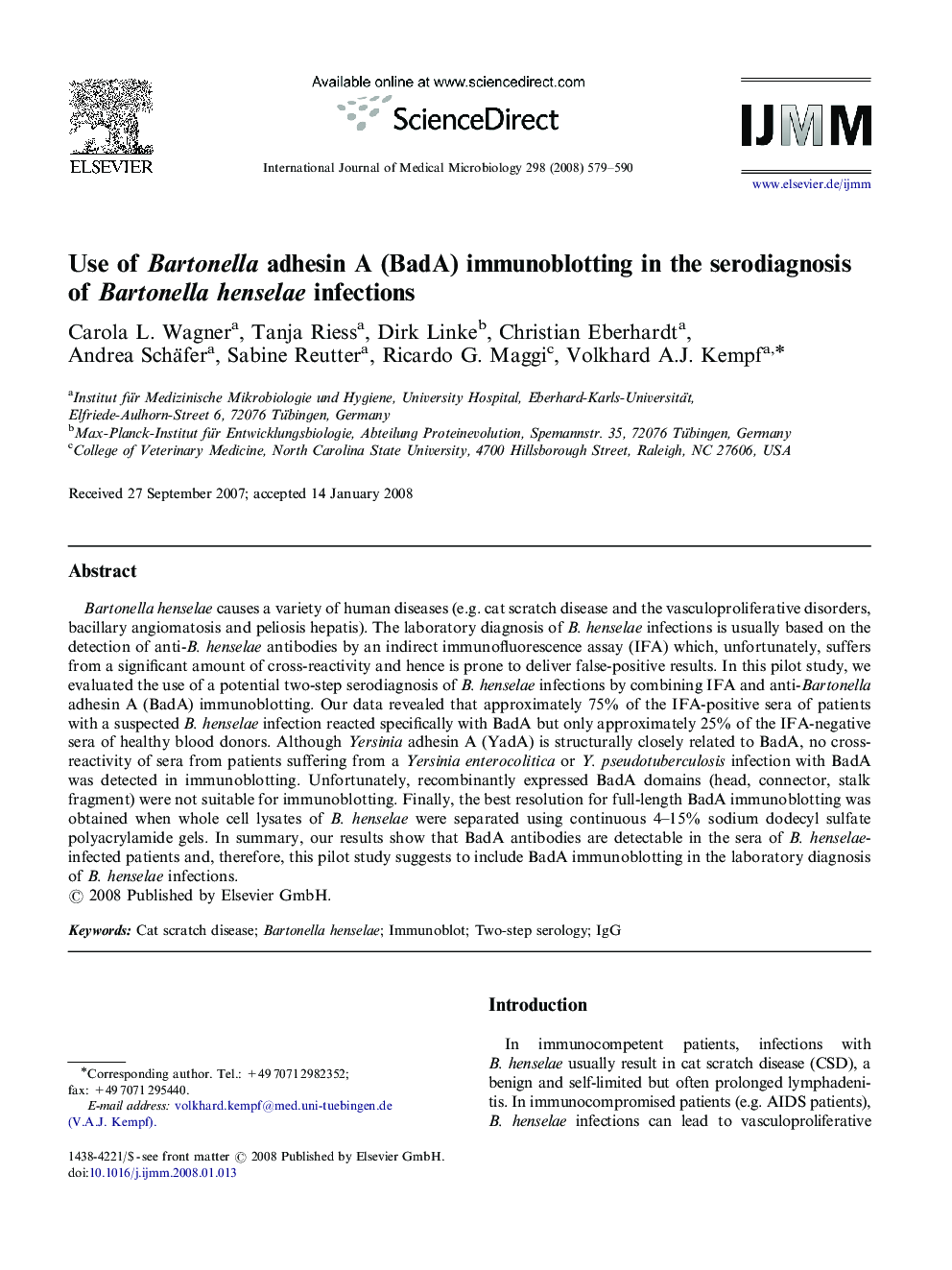| Article ID | Journal | Published Year | Pages | File Type |
|---|---|---|---|---|
| 2054317 | International Journal of Medical Microbiology | 2008 | 12 Pages |
Bartonella henselae causes a variety of human diseases (e.g. cat scratch disease and the vasculoproliferative disorders, bacillary angiomatosis and peliosis hepatis). The laboratory diagnosis of B. henselae infections is usually based on the detection of anti-B. henselae antibodies by an indirect immunofluorescence assay (IFA) which, unfortunately, suffers from a significant amount of cross-reactivity and hence is prone to deliver false-positive results. In this pilot study, we evaluated the use of a potential two-step serodiagnosis of B. henselae infections by combining IFA and anti-Bartonella adhesin A (BadA) immunoblotting. Our data revealed that approximately 75% of the IFA-positive sera of patients with a suspected B. henselae infection reacted specifically with BadA but only approximately 25% of the IFA-negative sera of healthy blood donors. Although Yersinia adhesin A (YadA) is structurally closely related to BadA, no cross-reactivity of sera from patients suffering from a Yersinia enterocolitica or Y. pseudotuberculosis infection with BadA was detected in immunoblotting. Unfortunately, recombinantly expressed BadA domains (head, connector, stalk fragment) were not suitable for immunoblotting. Finally, the best resolution for full-length BadA immunoblotting was obtained when whole cell lysates of B. henselae were separated using continuous 4–15% sodium dodecyl sulfate polyacrylamide gels. In summary, our results show that BadA antibodies are detectable in the sera of B. henselae-infected patients and, therefore, this pilot study suggests to include BadA immunoblotting in the laboratory diagnosis of B. henselae infections.
